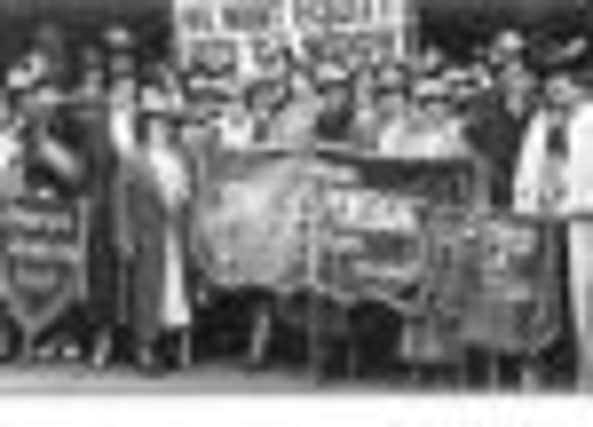Ordinary women are finally given their place in history


HISTORY, it has often been said, is written by the victors.
That may well be the case but it has also usually been written by men, at least until recently, which has meant the sterling work carried out by women over the centuries has often been pushed to the sidelines or forgotten altogether.
There are some women, of course, whose names and exploits have lingered long in the memory, such as Charlotte Brontë, aviator Amy Johnson and Barbara Hepworth. Now their lives, along with those of scores of unsung women from the past, are being brought to the public’s attention thanks to a new website which goes live tomorrow.
Advertisement
Hide AdAdvertisement
Hide AdThe History to Herstory project, run by Huddersfield University and developed alongside West Yorkshire Archives Service, is free to use and means people around the world will be just a click away from more than 80,000 historical documents that shed light on the lives of Yorkshire women, particularly in the 18th and 19th centuries.
Online visitors will be able to explore a vast archive of diaries, letters, journals and photographs that tell the fascinating story of women’s lives at home and in the workplace.
As well as information about women like the Brontës, the archives also reveal information about organisations that hitherto many people didn’t know ever existed – such as the Huddersfield Female Educational Institute, which opened in 1846.
This was one of the first of its kind to be opened in the UK, and the minutes and annual reports offer an insight not only into the running of the institute, but also those who used it and their occupations.
Advertisement
Hide AdAdvertisement
Hide AdAnother organisation that can be found in the archives is a Women’s Christian Temperance Union formed at Ossett, near Wakefield, in 1891. At its inaugural meeting a local newspaper reported the platform was “filled with ladies” who “fairly surprised many persons in the audience by their ability as public speakers”. This may sound patronising but it illustrates the prevailing attitudes of the time.
One of the more unusual women’s groups documented by the project is the National Spinsters’ Association, formed in 1935 after a meeting at Bradford, which campaigned for pensions for unmarried women aged 55 and over. The chief organiser was Bradford-born Florence White. She worked at Tankard’s Mill until she was 18, then as a dressmaker and piano teacher, and she later ran a bakers’ and confectioners’ shop in Lidget Green with her sister Annie.
She organised the initial meeting in West Yorkshire to publicise the plight of spinsters, and it quickly gained momentum growing into the National Spinsters’ Pension Association. In 1941, the campaign group won a partial victory when pensions were given to all women at 60. But following the Second World War the campaign became less urgent, and the association officially disbanded in 1958. Florence White died three years later.
The digitised material on the new website comes from the West Yorkshire Archives, as well as the archive collections of Huddersfield University, Hull University and the Brontë Society.
Advertisement
Hide AdAdvertisement
Hide Ad“It is a fantastic resource,” says Katy Goodrum, of the West Yorkshire Archives Service, “and the main thing for me is a huge amount of the material is in women’s own words, which is quite rare.”
The History to Herstory project began back in 2002, but proved difficult to run and the website has now been rebuilt at a cost of £54,000, funded by the e-content organisation Jisc and Huddersfield University. Dr Rob Ellis, from Huddersfield University’s history department, has been involved in the project for the past 12 months, and believes it will become an invaluable resource tool.
“It’s important not just to people in Yorkshire, but people nationally and internationally. There is information about the Brontës from primary sources that in the past you wouldn’t have been able to access unless you travelled to Haworth, and that’s the key thing. It’s about making all this stuff accessible online,” he says.
“It’s not only for people who are interested in women’s history, it can help family historians tracing their family trees and there is a lot of information that is useful to local historians. Attitudes have changed and there is more interest in women’s history now and it’s nice to be able to bring all this information together on one site.”
The History to Herstory website goes live this Friday. Visit http://www.historytoherstory.org.uk